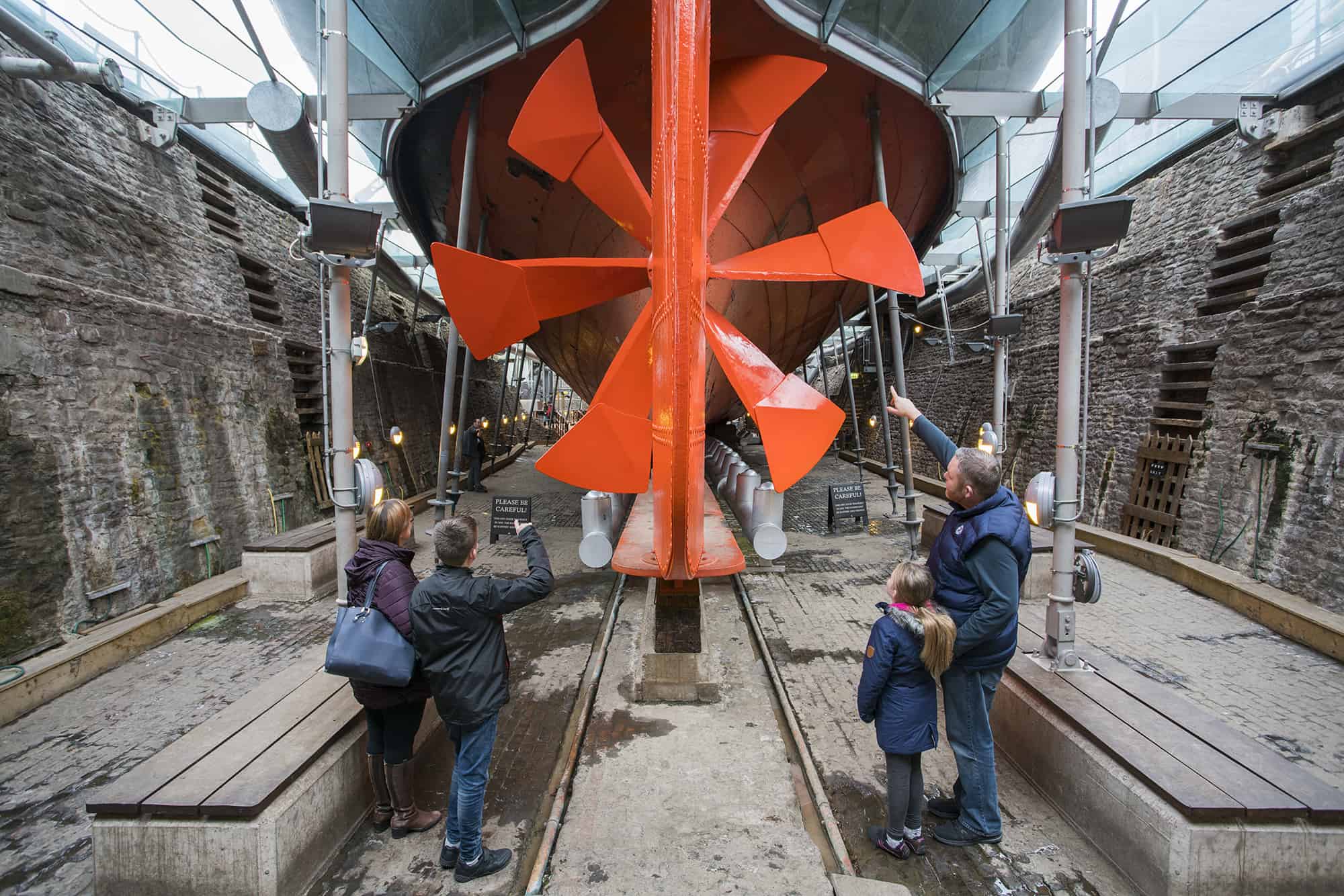As Ship’s Conservation Engineer, the main aim of my job is to make sure we are looking after the iron hull of the ship both now and in the future. One of the reasons the SS Great Britain had such an interesting life is that she was made from iron – she was the first ocean ship to be built with this new material, which allowed her to be bigger, stronger, and longer-lasting than had ever been possible with wood. Because the iron is such an important part of the ship’s story, we need to make sure we preserve it.
When iron is soaked in seawater, chloride particles from the salt become embedded in the structure of the metal. This speeds-up corrosion – or rusting – and the only way to slow down this process is to keep the iron very dry. With help from researchers at Cardiff University, we discovered that the air inside and around the bottom part of the ship needed to be kept as dry as the air in the Arizona desert, which has a relative humidity of below 20%.
We do this using dehumidifiers which filter the air through a desiccant, a type of material which absorbs moisture. Part of my job is to examine how well this system is working by studying information from the sensors which monitor the ship, and by exploring the harder-to-reach parts to identify any areas we need to pay extra attention to. I’m also learning more about the corrosion process, so I can decide whether we need new research to help protect the ship in the future.
The system which dries the air and moves it around the ship was carefully designed to be energy-efficient. Since it was installed in 2005, technology has progressed and we have collected a lot of data, so I’m using this information to find new ways to keep the air dry enough using even less energy.
Part of my job is also to help our visitors understand the ship. The Brunel Institute, where my office is located, is open to the public and we often have Brunel’s designs out on display. I can sometimes be found in there helping the volunteers answer visitors’ questions about how Brunel’s innovations work and how we are conserving the ship for future generations. I also sometimes help our education team, using Brunel’s work to inspire and encourage the next generation of engineers!
Author: Nicola Grahamslaw, Ship’s Conservation Engineer



